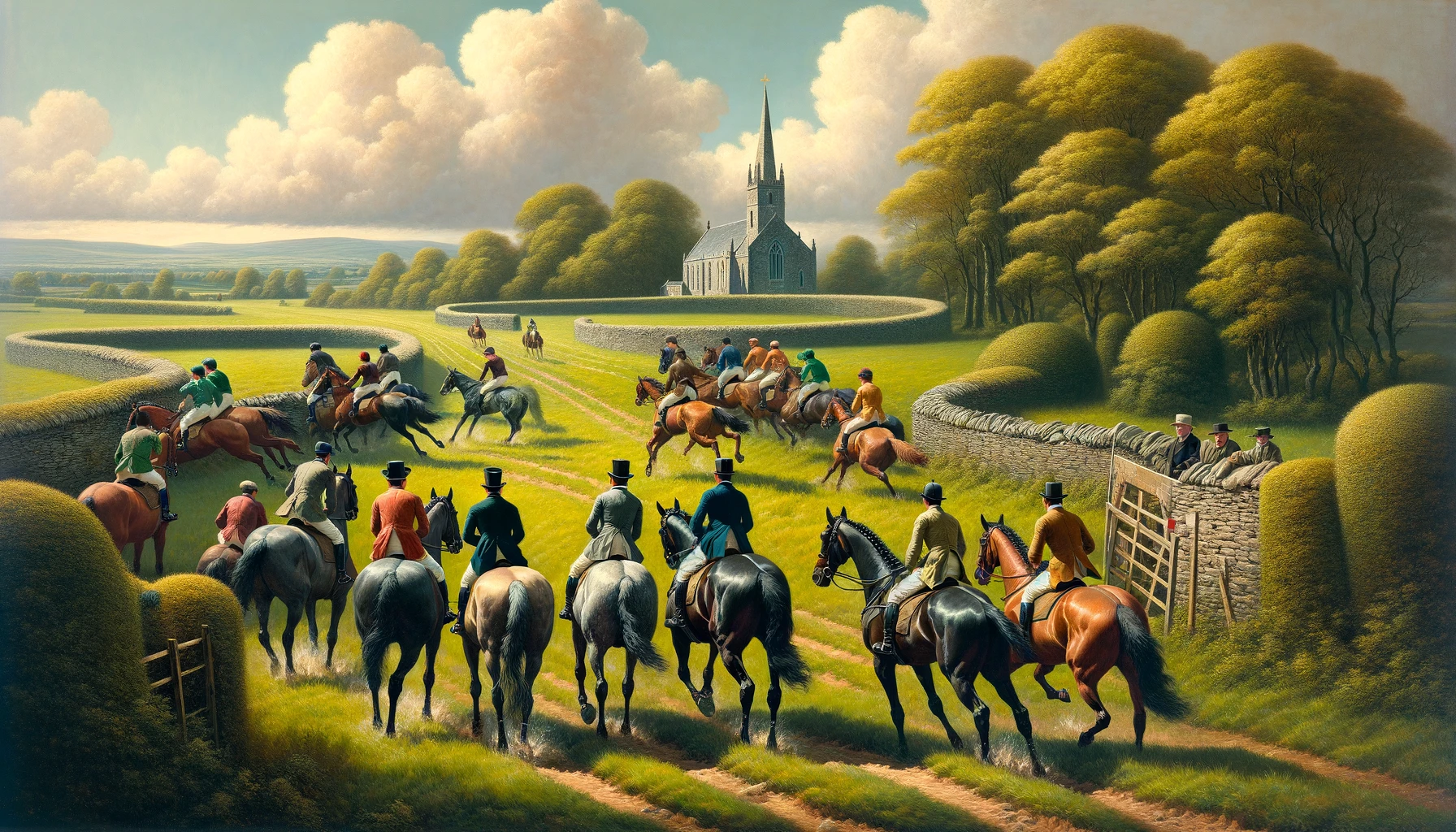Steeplechase racing, an athletic endeavor filled with obstacles and history, traces its roots back to 18th-century Ireland, evolving over centuries into the modern sporting events we witness today. This exploration delves into the fascinating journey from its origins to its current status as a cherished athletic discipline, illuminating the evolution, challenges, and triumphs that define steeplechase racing.
Early Beginnings in Ireland
The steeplechase’s inception is a tale of endurance, agility, and the human spirit’s connection with the equine world. In Ireland, where vast landscapes stretch under the open sky, the first steeplechase races emerged out of practical necessity and sportive competition. Riders would challenge each other to races from one town’s church steeple to the next, using these high points as navigation markers. The race was not merely a test of speed but of strategy and skill in overcoming natural obstacles like streams and stone walls that lay between the steeples. This form of racing encapsulated the essence of rural Irish life, blending community, competition, and the natural world into a singular, exhilarating experience.
Transition to Structured Sport
The leap from informal countryside races to structured athletic competition occurred in the 19th century. The University of Oxford, in 1860, incorporated a two-mile cross-country steeplechase into its sports program, marking a significant milestone in the sport’s formalization. However, the true transformation came in 1865 when the race was adapted to include fixed barriers and a flat field, setting the foundation for modern steeplechase racing. This evolution mirrored the broader trends in sports during the era, moving towards standardized rules and formats that could be replicated and recognized in competitions worldwide.
Olympic Recognition and Evolution
The steeplechase’s inclusion in the 1900 Olympics signified its acceptance on the global sports stage, although it took several iterations to standardize the event’s distance and rules. Initially featuring varying lengths, it was not until the 1908 Olympics that the men’s steeplechase found its standard 3,000 meters format. The event has been a testament to endurance and technique, with the dominance of Kenyan athletes since the 1968 Summer Olympics highlighting the emergence of regional strengths in the sport. The introduction of the women’s 3,000 meters steeplechase at the 2008 Beijing Olympics marked a significant step towards gender equality in athletics, acknowledging the sport’s universal appeal and challenge.
Also Read: 8 Best AI Poem Generators to Boost Your Creativity
Technical Challenges and Athletic Excellence
The steeplechase is distinguished from other races by its unique obstacles, including water jumps and barriers, which test athletes’ physical and mental resilience. The men’s and women’s events, while similar in distance, are tailored to ensure fairness in competition, with adjustments in barrier heights and distances to the water jump. These obstacles are a nod to the sport’s origins, where natural barriers demanded agility and strategy. Today’s athletes train specifically for these challenges, combining speed with technique to navigate the course efficiently.
Expanding Horizons
Beyond the Olympics, steeplechase racing has found a home in various championships and age groups, adapting to encourage participation across the spectrum of athletic ability. Youth and masters athletics have embraced shorter distances, such as the 2,000 meters steeplechase, making the sport accessible and enjoyable for a broader audience. This adaptability speaks to the steeplechase’s enduring appeal, offering a unique blend of physical challenge and strategic racing that captivates athletes and spectators alike.
The Steeplechase Legacy
The steeplechase stands as a monument to the evolution of sport, from its humble beginnings on the rolling hills of Ireland to the polished tracks of the world’s greatest athletic stages. It embodies the spirit of competition, the joy of movement, and the bond between athlete and environment. As steeplechase racing continues to evolve, it carries forward the legacy of those early races, celebrating human endurance and the timeless appeal of overcoming obstacles, both literal and metaphorical.
Conclusion
The origin of steeplechase racing is more than a historical curiosity; it is a narrative of human endeavor, a reflection of our relationship with the natural world, and a testament to the enduring appeal of athletic competition. From the pastoral landscapes of Ireland to the Olympic Games, steeplechase racing has traversed a remarkable journey, captivating hearts and challenging athletes for centuries. As we celebrate its past, we also look forward to its future, recognizing that at its core, the steeplechase is a celebration of life’s hurdles and the joy found in overcoming them.

